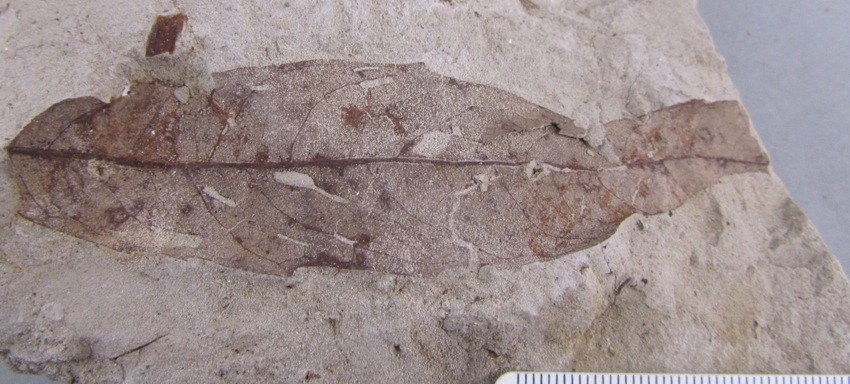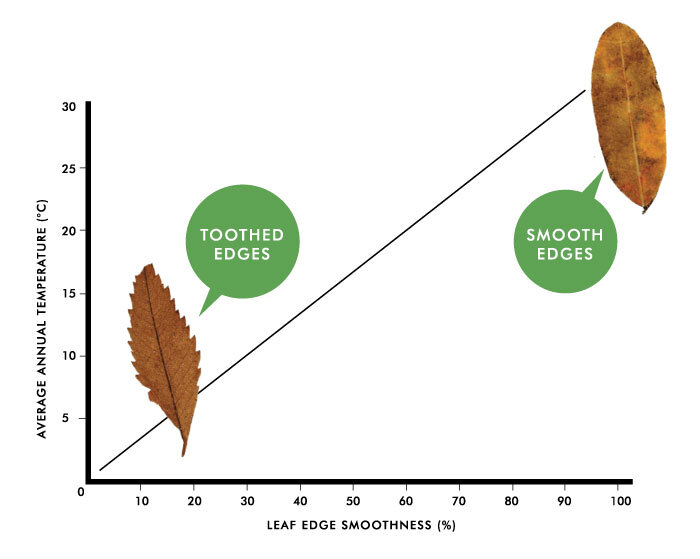The size and shape of leaves, what botanists call ‘leaf architecture’, is highly correlated with temperature, precipitation and seasonality. Angiosperms (flowering plants) have always been faced with a trade-off: how to balance the effectiveness of photosynthesis while reducing water loss from evapotranspiration. Photosynthesis, the process by which plants process energy for themselves, requires sunlight to come into contact with chlorophyll the plant cells. The bigger the leaf, the more plant cells can be exposed to the sun. Evapotranspiration is kind of like the plant equivalent of sweating – plants lose water through their tissues. The bigger the leaf, the more water is lost.

Dryophyllum leaf. This is a leaf that was collected from Scotty T. rex's quarry, near Eastend, SK, and is about 65 million years old. Scotty lived in a warm temperate, or subtropical climate (a modern analogue might be the Florida Everglades).

The link between temperature and leaf architecture.
As long as angiosperms have been around, they have had to strike a balance between maximizing photosynthesis and reducing evapotranspiration, often converging on leaf shapes that best handle both situations. The example of toothed versus smooth edges is one solution to the problem: leaves with toothed edges generally lose less water than leaves with smooth edges, which is why they are often (though not always) found in cooler, drier climates. Leaf architecture is so closely linked to climate that studying fossil leaves is one of the most accurate paleoclimate proxies that exist. Fortunately in Saskatchewan, we have a lot of beautiful fossil leaves to study!

